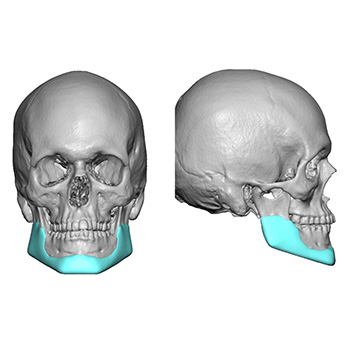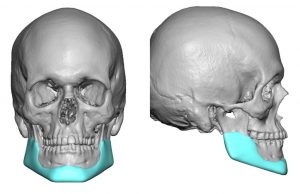Background: Most concerns about the need for jawline augmentation are focused on the horizontal and width dimensions. Making the lower jaw more prominent is done by this 2D approach. The main need for adding verticality to the jawline is most commonly done in the posterior jaw angles where a high mandibular plane angle has created a steep jawline from the ear to the chin.
But the reverse of a high mandibular plane angle is that of a flat mandibular plane angle. In this jaw shape the vertical length of the jaw angles is adequate but the chin is aesthetically vertically short. This creates need to drop the chin down as well as the jawline behind it back to the existing jaw angle corner.
When the chin is vertically short there are two methods to lengthen it. It can be done by an opening wedge bony genioplasty or an implant can be added onto the bottom of it. For the sake of a smooth and linear jawline behind the chin only an implant can provide that effect.
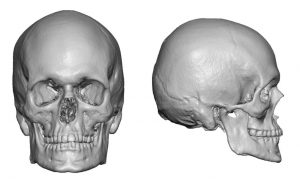
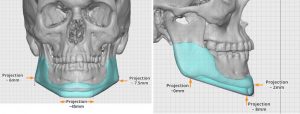
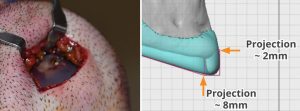
There are limits as to how much the soft tissue chin pad can be detached from the bone and then pulled over an implant that drops the inferior border down. In my experience that limit is around 7 to 8mms. If the chin pad is not elastic enough to stretch over the lowered inferior chin border a double bubble or double roll effect will occur. This will be most evident in the side view where the implant edge is the lower border and the bulk of the soft tissue chin pad sits anterior to it.
Case Highlights:
1) Lower jaws with a more flat mandibular plane angle need vertical chin and jawline lengthening.
2) The soft tissue limitations for implant lengthening are in the anterior chin area with the tighter soft tissue chin pad.
3) Only a custom implant design can add length along the entire lower border of the jawline.
Dr. Barry Eppley
Indianapolis, Indiana

